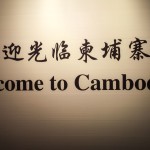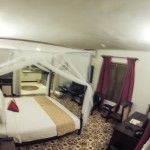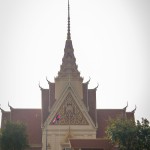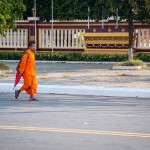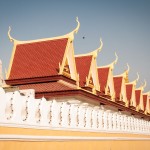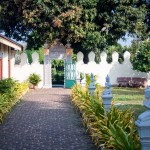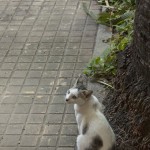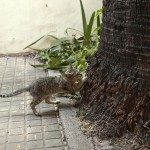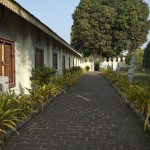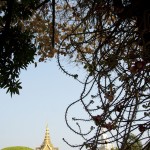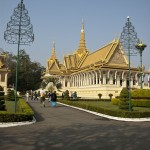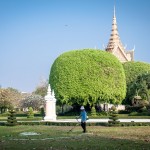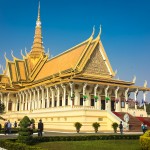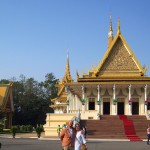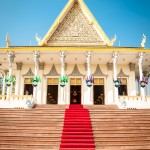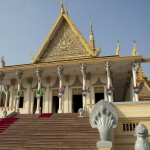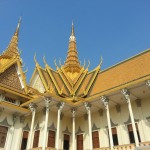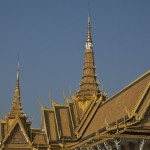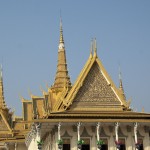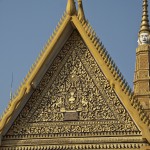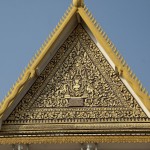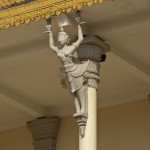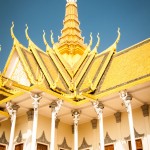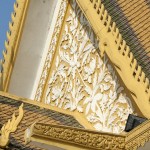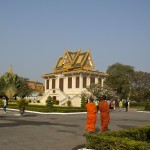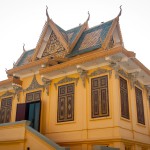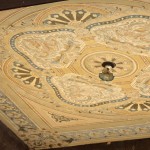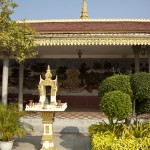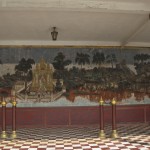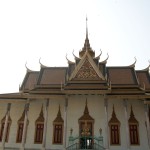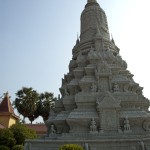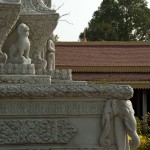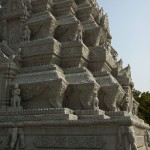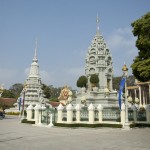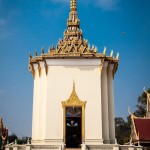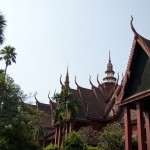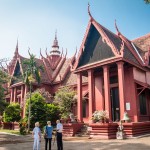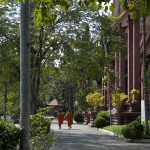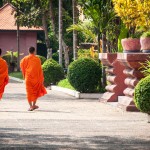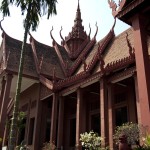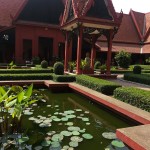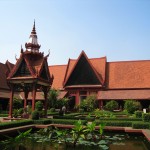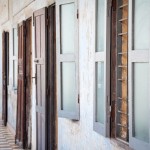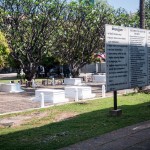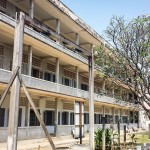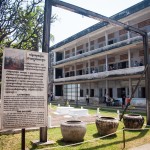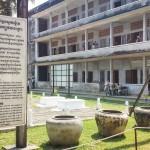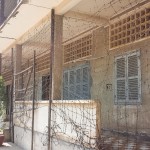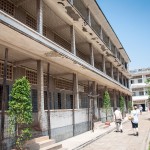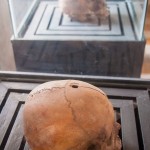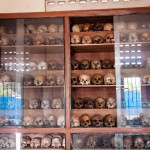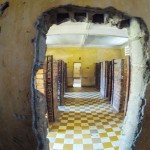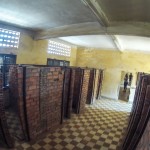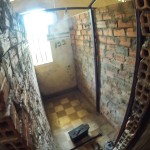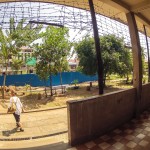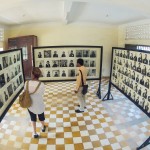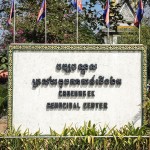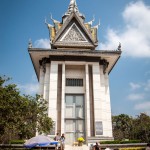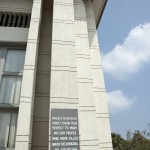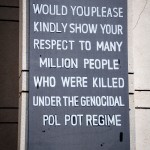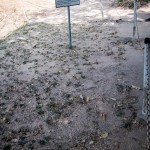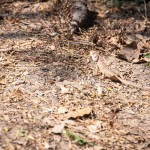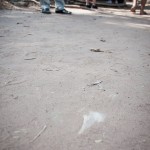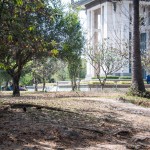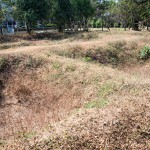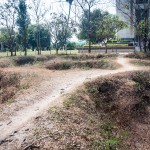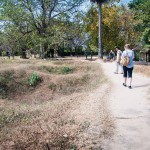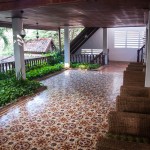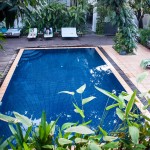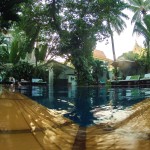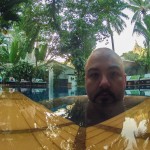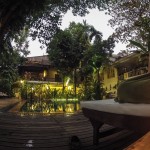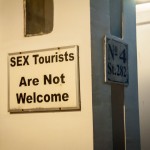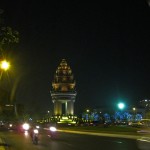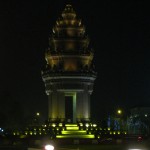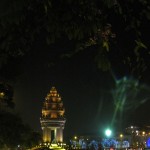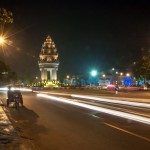Vietnam & Cambodia Trip – Stop Eight – Phnom Penh, Cambodia
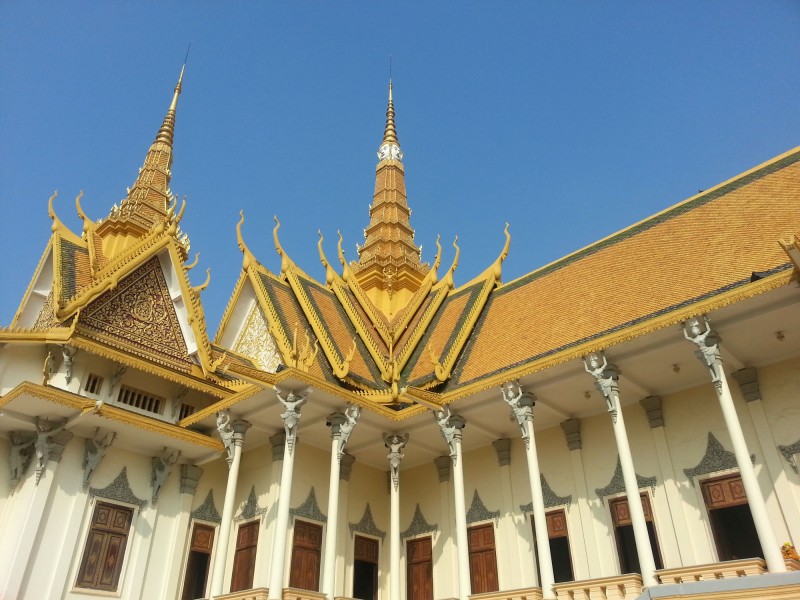 On February 15th, we said good-bye to Vietnam and flew to Cambodia, arriving in Phnom Penh in the evening. On arrival we had to complete the VISA paperwork. It was a crazy scene with a lot of people confused as to what papers were needed and language barriers. It was a bit overwhelming but luckily there were no issues and we quickly exited the airport.
On February 15th, we said good-bye to Vietnam and flew to Cambodia, arriving in Phnom Penh in the evening. On arrival we had to complete the VISA paperwork. It was a crazy scene with a lot of people confused as to what papers were needed and language barriers. It was a bit overwhelming but luckily there were no issues and we quickly exited the airport.
On the short ride from the airport to our hotel, it was clear that we were in a very different country. The guide explained that Cambodia is still heavily influenced by the Khmer Rouge and it was not always safe to answer our questions in public. At times during our visit we may need to wait until we returned to the car to discuss some things. This sort of control made it clear, to me, the idea of freedom of speech we have in the U.S. and what that really means. A little unsettled, we arrived at our hotel.
The hotel looked like nothing special from the dusty street, but once we walked through the gate it was a green garden. There was an open lobby and dining area next to an infinity pool. It was rather late so we just walked a few blocks to have dinner and then went to bed.
We met our guide early the next morning. The goal was to tour the city while it was still somewhat cool out and then spend the hot hours of the day at the hotel pool. The first stop was the Royal Palace complex. The kings residence is located in the complex, and much of the area is closed to tourists. We were able to enter two of the buildings but were not permitted to take photographs inside. That did not matter much since it was the exterior, the architecture, that was impressive. Some of the buildings show evidence of the French but the influence of Thai culture is also very evident in most of the architecture. This was the first time I had seen any of this type of architecture and it was amazing.
The main building in the complex is the Throne Hall, which due to an event later in the day, we were unable to enter. We did visit the Bronze Palace, which is a smaller building were royal gifts and costumes were displayed. From there we went to the Silver Pagoda and court yard. The name Silver Pagoda is in reference to the silver tiles used on the floor, however it is formally named the Temple of the Emerald Buddha. Inside most of the tiled area is covered with rugs so that you cannot really see the silver tiles. On display were numerous other Buddha sculptures in addition to the Emerald Buddha. Outside in the courtyard there were several large Stupas and long mural painted with scenes from the Ramayana Epic. Only some of the mural was visible, as much of it was being cleaned. When leaving the complex, we passed by where processional mounts for elephants were displayed and an example of a traditional Khmer house.
Our next stop was a block away; the National Museum of Cambodia. Our guide was not permitted to show us around the museum, however there was enough English descriptions to understand the displays. The museum holds a large collection of Khmer sculpture and, like many of the buildings in the country, is mostly open to the outside. What I found interesting was an exhibit of several sculptures recently returned to Cambodia. The pieces are believed to have been looted during the political turmoil in the 1960s and ’70s.
The mood of the touring shifted at this point and we visited the Tuol Sleg Genocide Museum. I don’t believe either of us knew a lot about the events in Cambodian history prior to our trip. We had watched The Killing Fields, but I know I did not really understand how recent the genocide was.
We sat under the trees in the compound that held an estimated 17,000 prisoners while our guide, a few years younger than us, told us about the horrible things that happened to his family. He explained the history of the Khmer Rouge and Pol Pot. Knowing that this happened within my lifetime is very frightening. The museum included photographs of many victims and paintings by one of the few survivors detailing the horrors. In fact only 12 individuals are known to have survived the prison. One of the survivors, Chum Mey, was there when we visited, signing his autobiography.
It was emotionally draining and, before we went to the Killing Fields, we stopped for lunch. We ate and processed everything we had seen so far. After, we drove outside the city to Choeung Ek; one of the sites known as the Killing Fields. It is thought that over a million people were executed at these sites during the Khmer Rouge rule. Currently the site is a memorial and reminder of the horrors that occurred in the 1970s. The visit put what we hard learned into perspective. In addition to pits that had been excavated, much of the property has not been touched. This meant that was we walked around we could see bones and clothes under our feet.
After the site, we returned to our hotel. By that time it was incredibly hot and it has been an emotionally draining day, so we went and sat by the pool for a few hours. When it cooled off a bit we then walked to dinner, passing near the Independence Monument on our way back for the night.
Chris’ Comments: I always tell people the mood in Cambodia is more somber than other places I’ve visited. We met many strong people, however the wounds of the Khmer Rouge are very, very fresh. There are two things I’ll remember Phnom Penh for: stepping over bones and clothes resurfacing through the ground at the Killing Fields, and the pain and tears of our guide recounting his family being tortured while visiting Tuol Sleg. I cannot imagine telling that story and living the pain every single time. It was more important for the world to understand than any personal comfort. His choice was not lost on us. In hindsight, it’s sad we were only there long enough to experience the ugliness.
Royal Palace Complex
National Museum of Cambodia
Tuol Sleng Genocide Museum
The Killing Fields
Hotel Pool and Last Night in Phnom Penh
Restaurants:
Khmer Surin – A lush, tropical garden of a restaurant. The food was pretty good and it was clear the restaurant was designed for tourists with a bit of money. Food prices were considerably higher in Cambodia, but still quite reasonable. This is one of those places you have a bit too much wine with friends while enjoying the atmosphere.
Malis – This was a very upscale restaurant a short walk from our hotel. I in fact felt very under dressed when we arrived. The prime seating is in the lower open air courtyard area but since we did not have a reservation we were seated upstairs in an air conditioned events room with a few other tables. The food was good, but not necessarily worth the price. It felt as if you were paying for the experience more than the food, which may be worth it if we were at one of the better tables with a more attentive server.
Note to our readers:
If you are interested, many of the photographs are captioned, just select the individual images to open them in a new window. Also, we were surprised how large the country was for a small country. I have put together a Travel Map with the places we visited to give an idea of how we managed to cover a good portion of the country during our trip.
